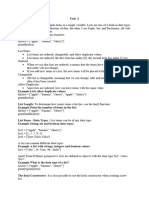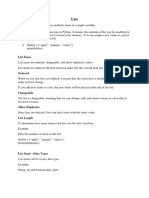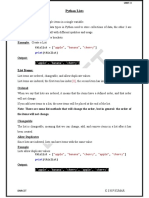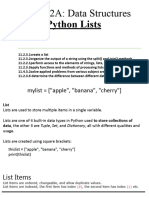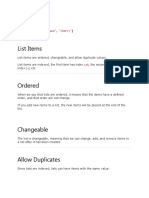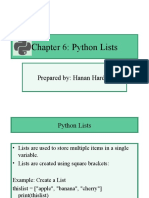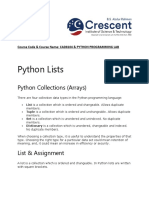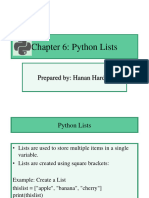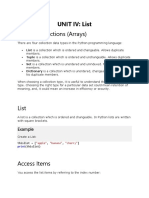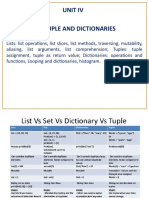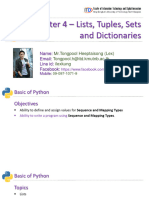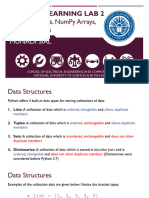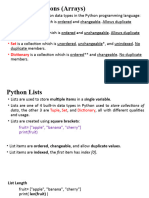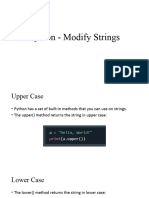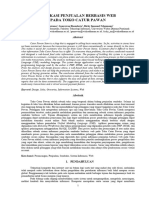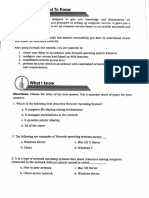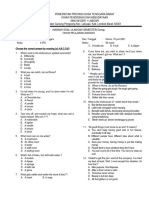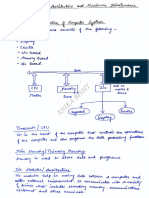0% found this document useful (0 votes)
28 views39 pages16 - Python Lists
Lists are mutable ordered sequences that can hold items of any data type. Lists allow duplicates and indexing of items. Some key list methods include append() to add items, pop() or del to remove items by index, insert() to add an item at a specific index, extend() to add elements from another iterable object, and clear() to empty the list without deleting it.
Uploaded by
hannamae.felisartaCopyright
© © All Rights Reserved
We take content rights seriously. If you suspect this is your content, claim it here.
Available Formats
Download as PPTX, PDF, TXT or read online on Scribd
0% found this document useful (0 votes)
28 views39 pages16 - Python Lists
Lists are mutable ordered sequences that can hold items of any data type. Lists allow duplicates and indexing of items. Some key list methods include append() to add items, pop() or del to remove items by index, insert() to add an item at a specific index, extend() to add elements from another iterable object, and clear() to empty the list without deleting it.
Uploaded by
hannamae.felisartaCopyright
© © All Rights Reserved
We take content rights seriously. If you suspect this is your content, claim it here.
Available Formats
Download as PPTX, PDF, TXT or read online on Scribd
/ 39









